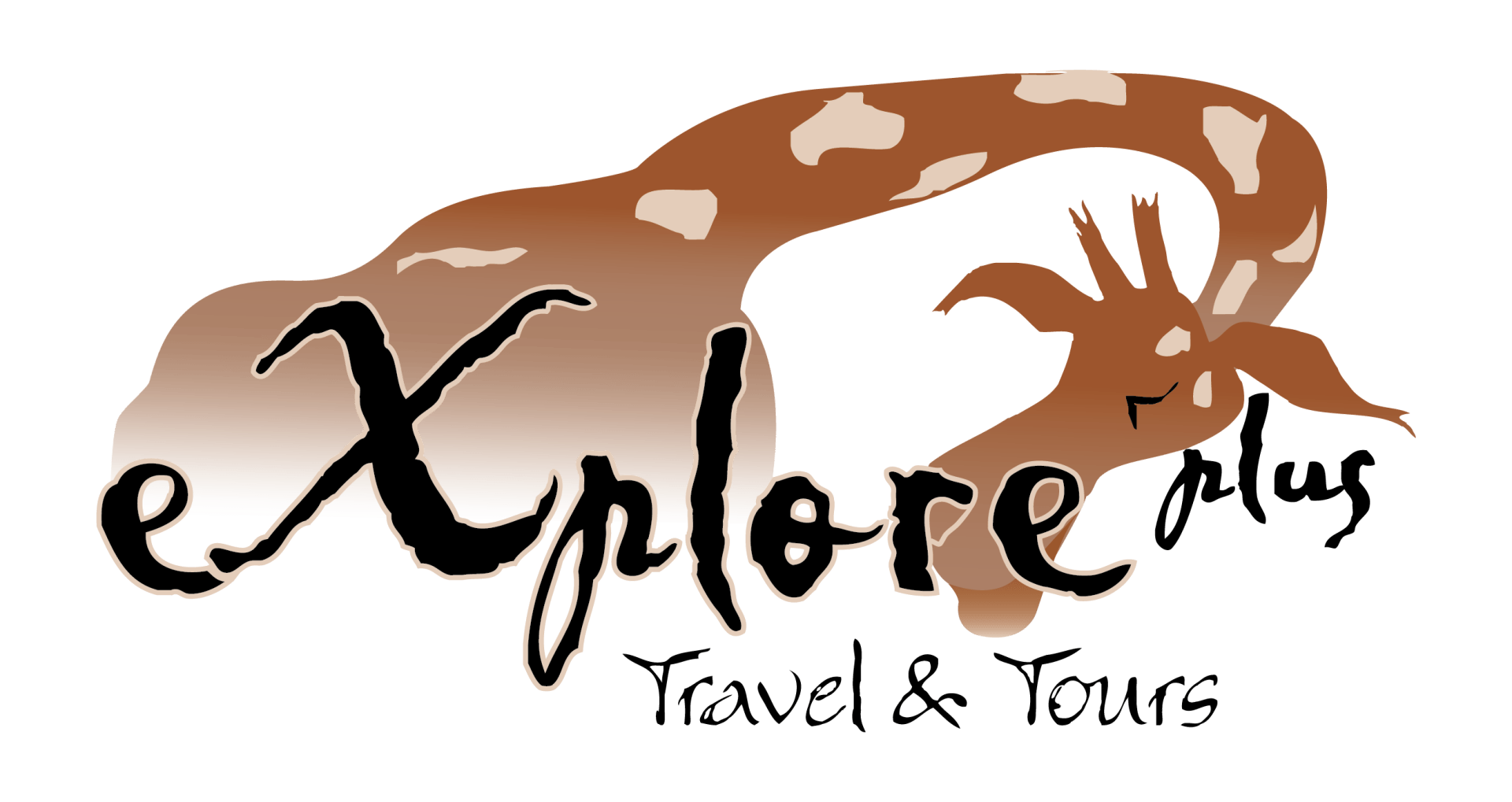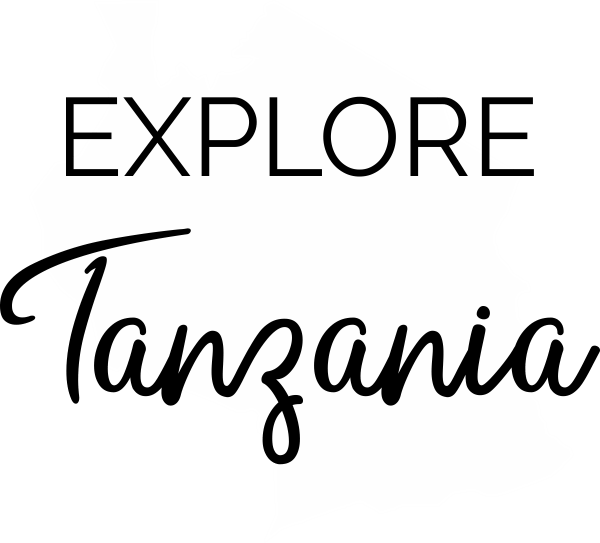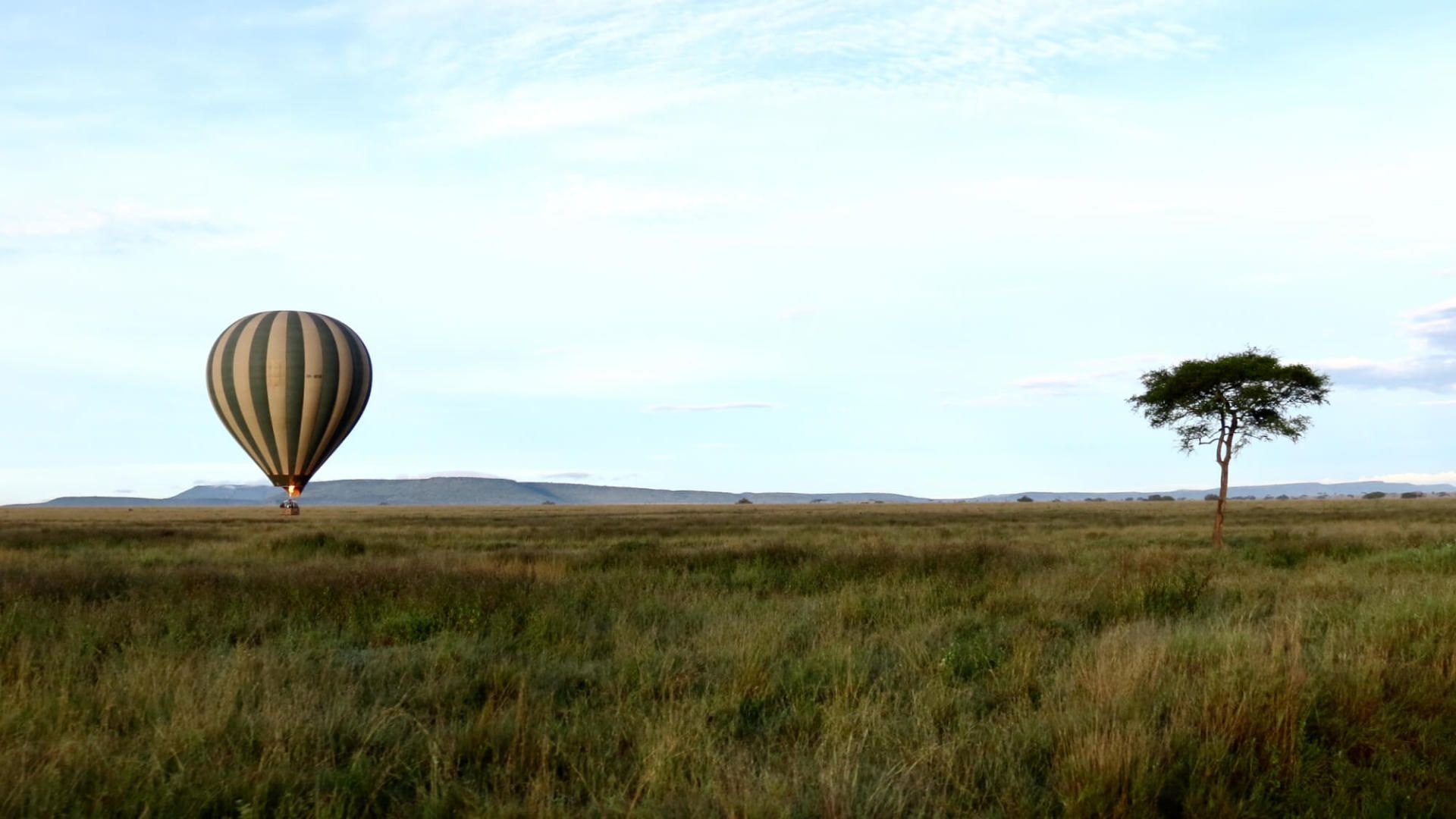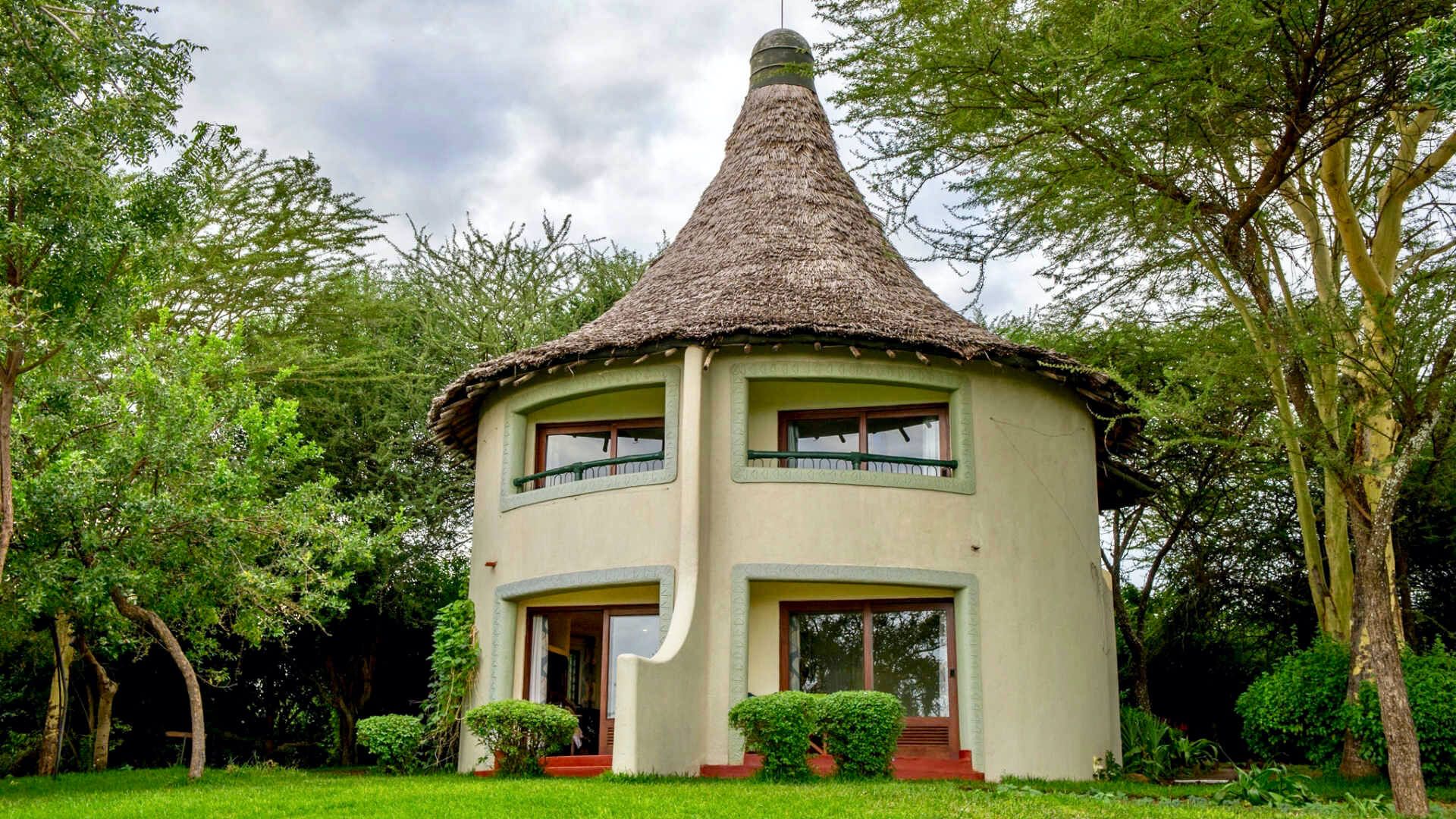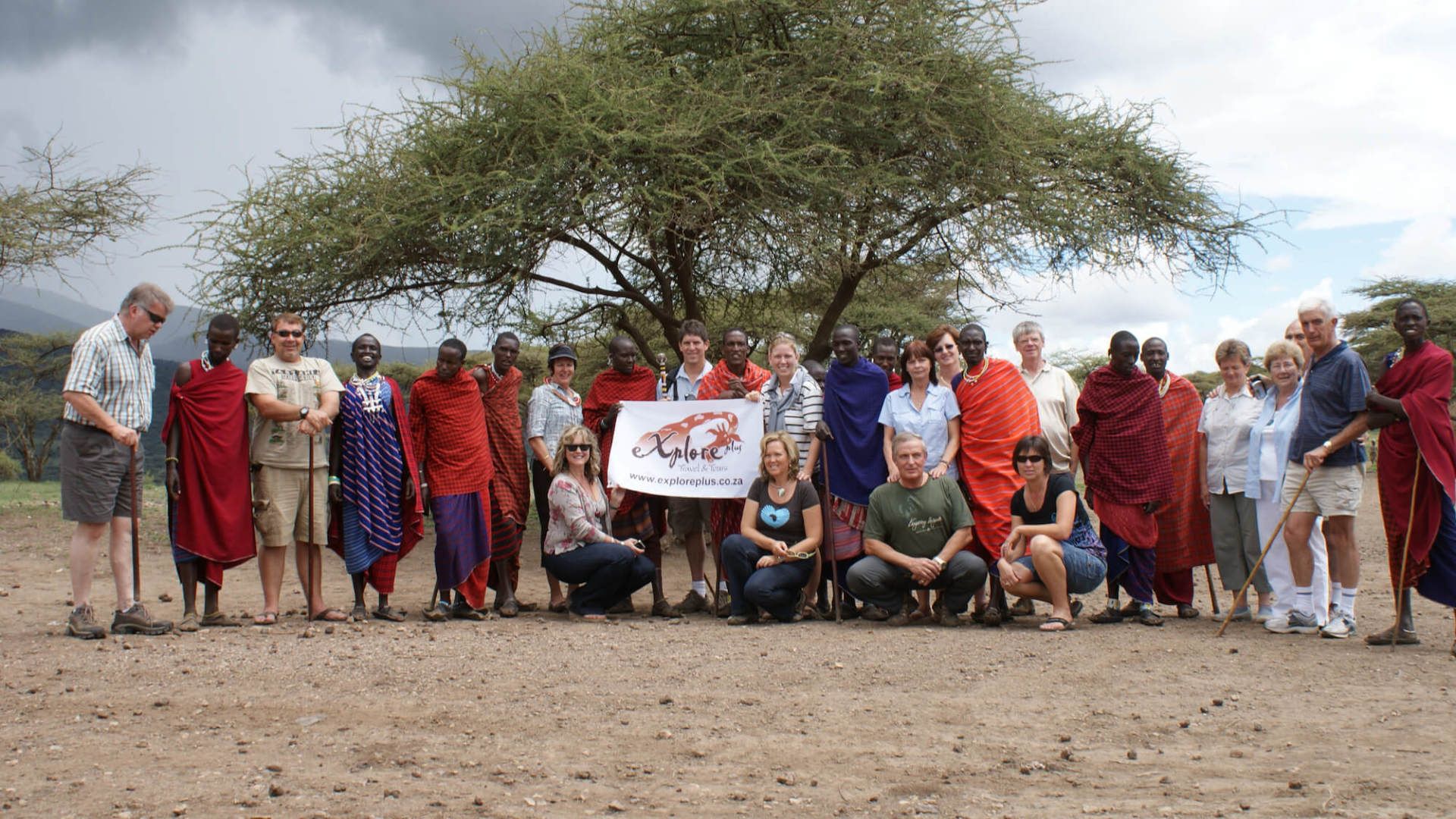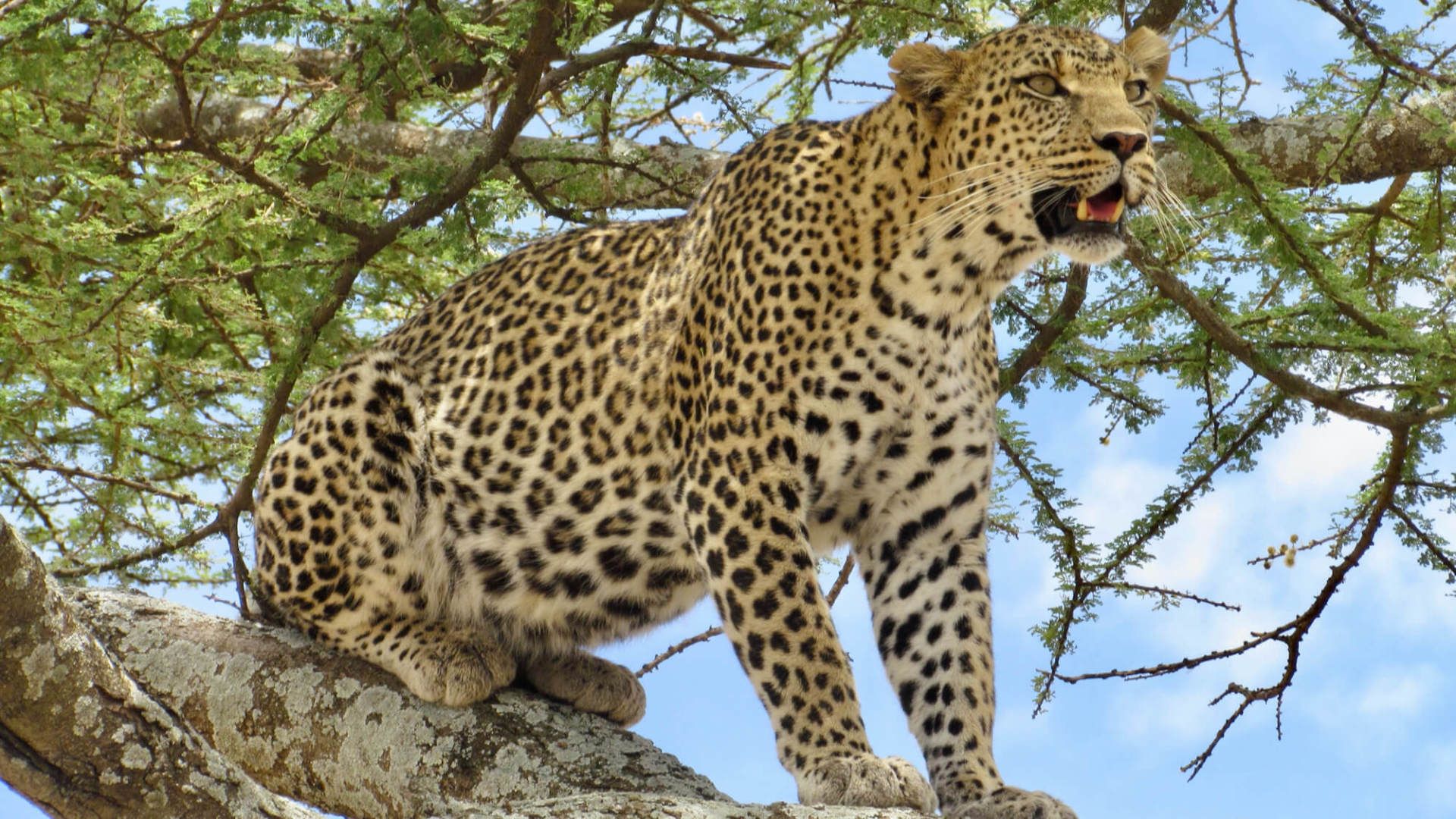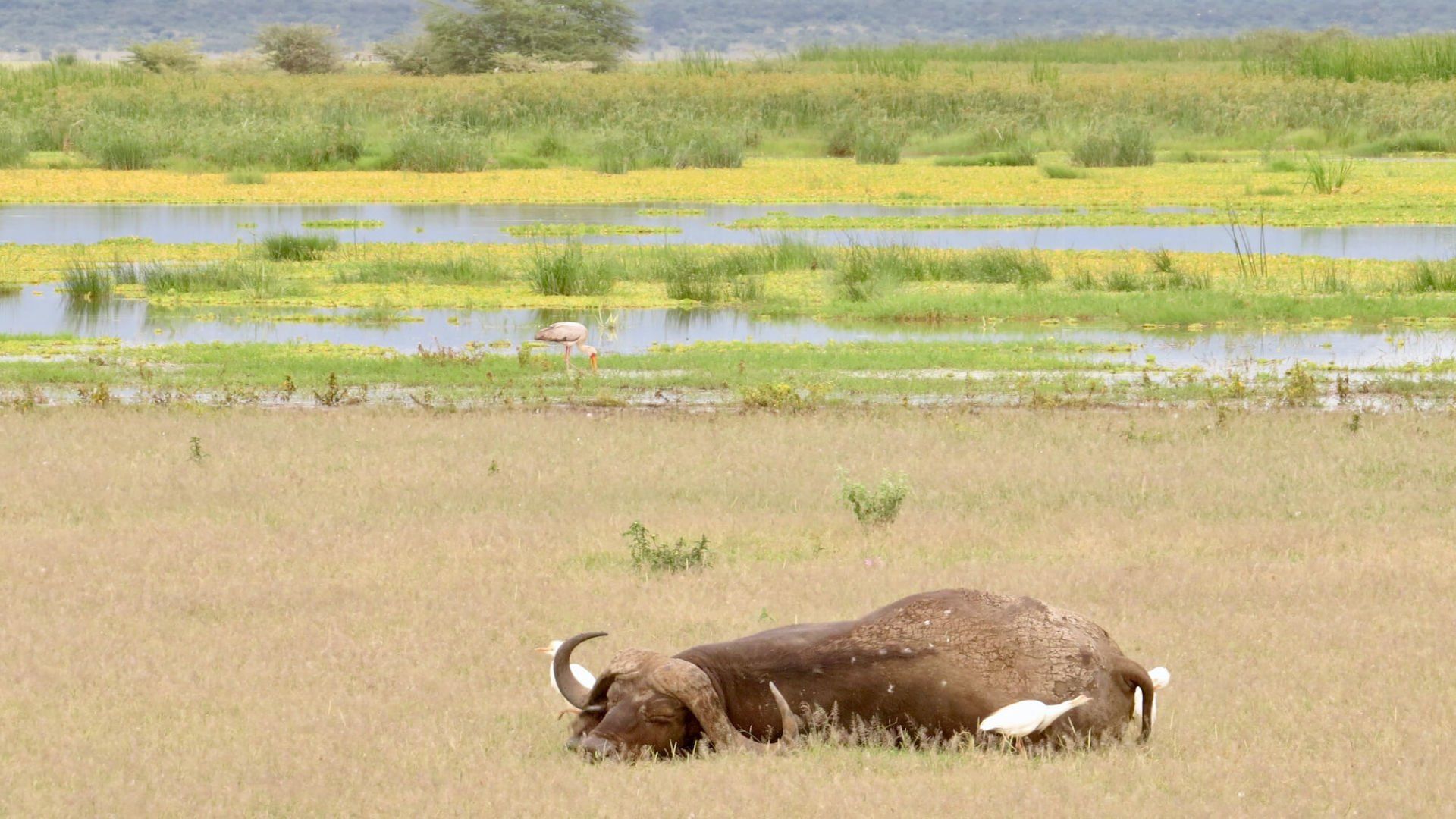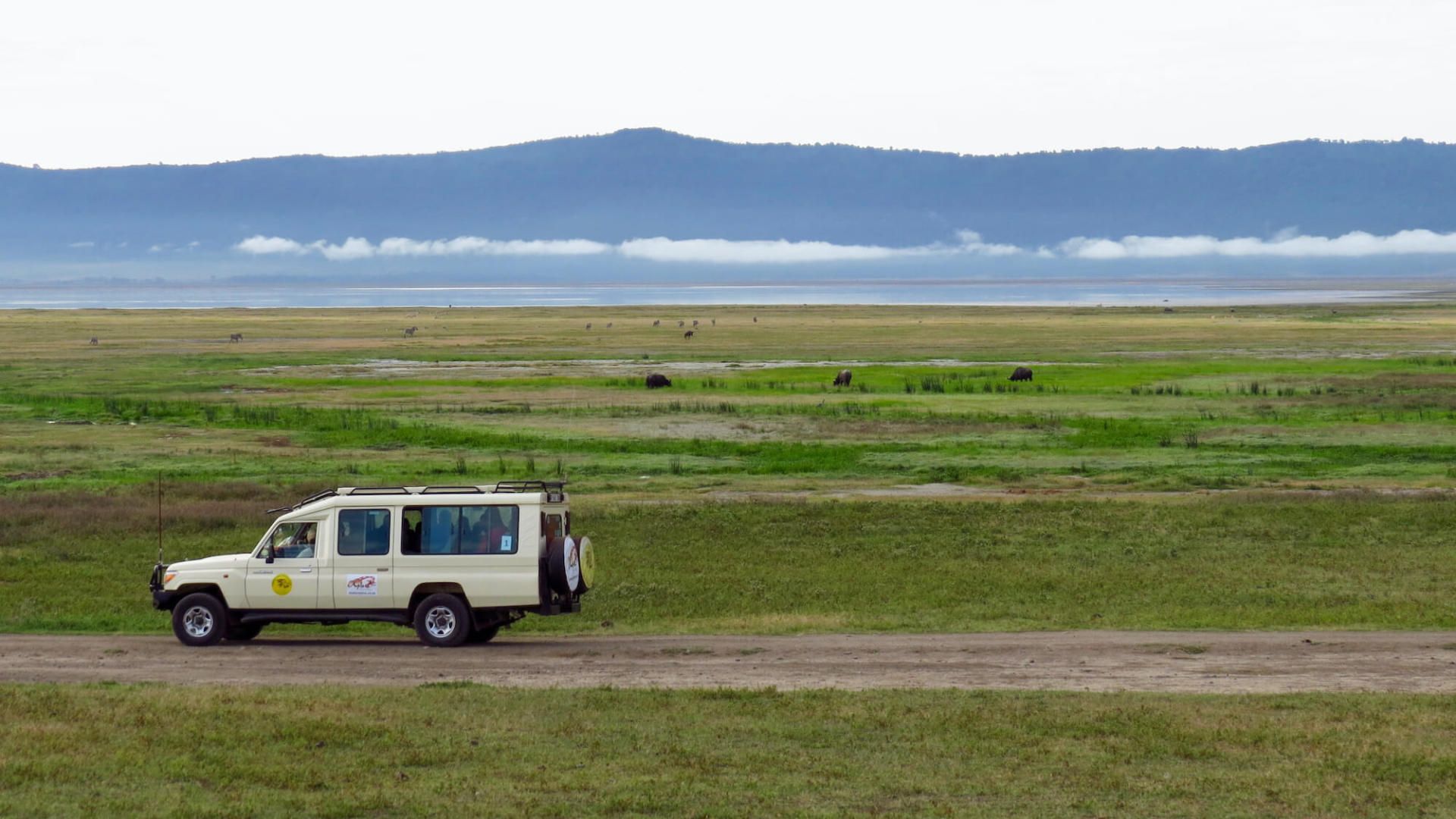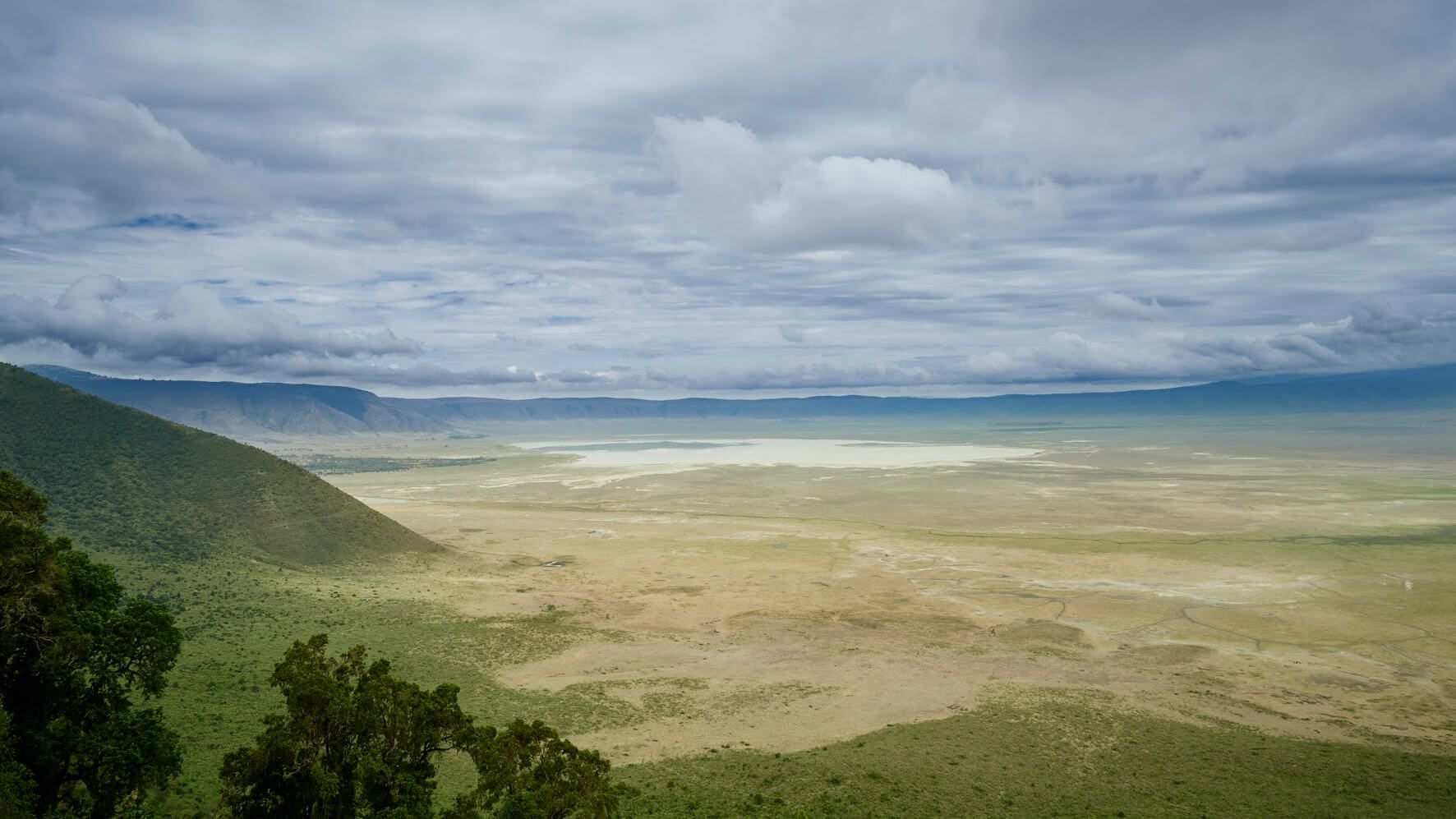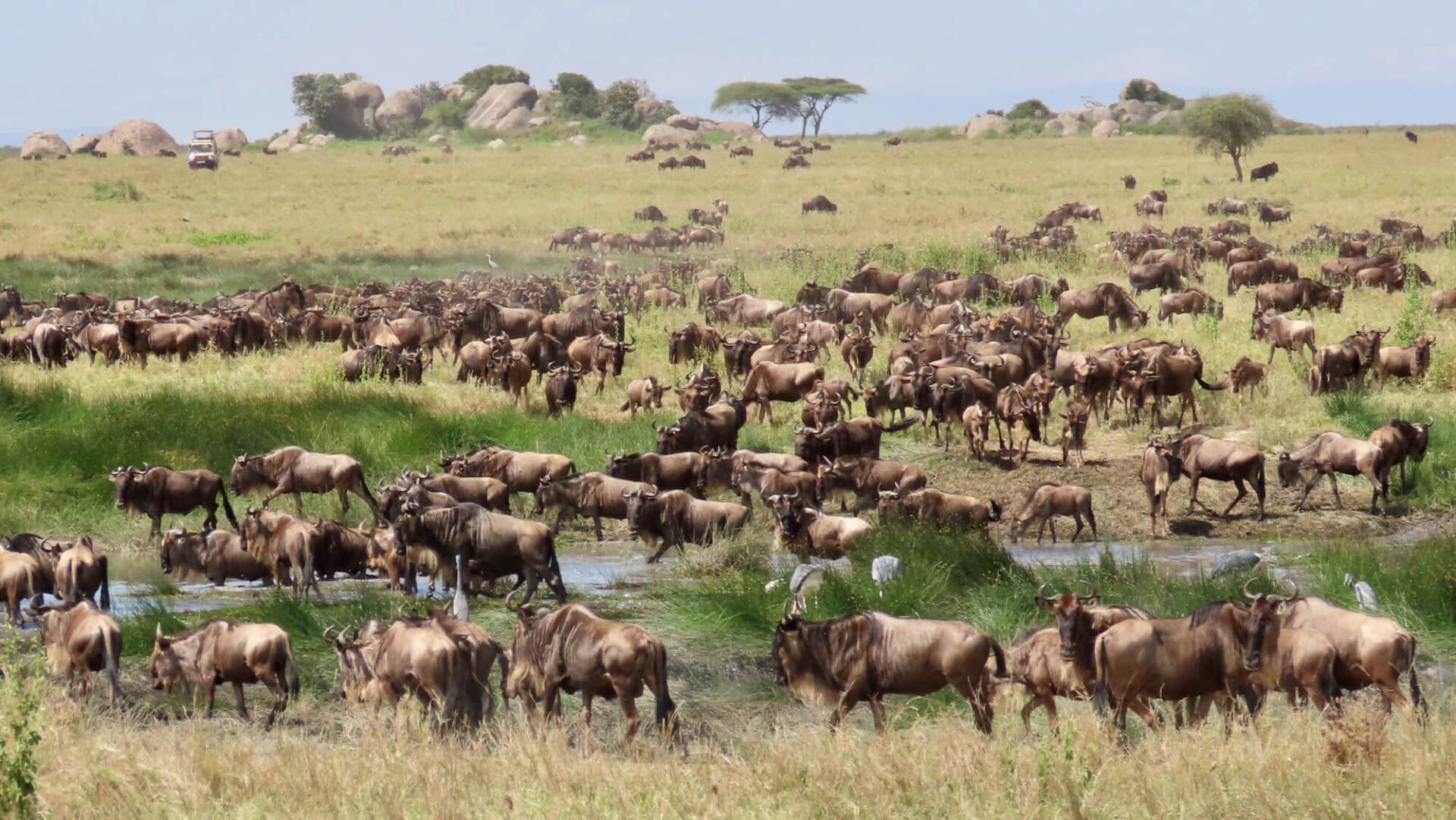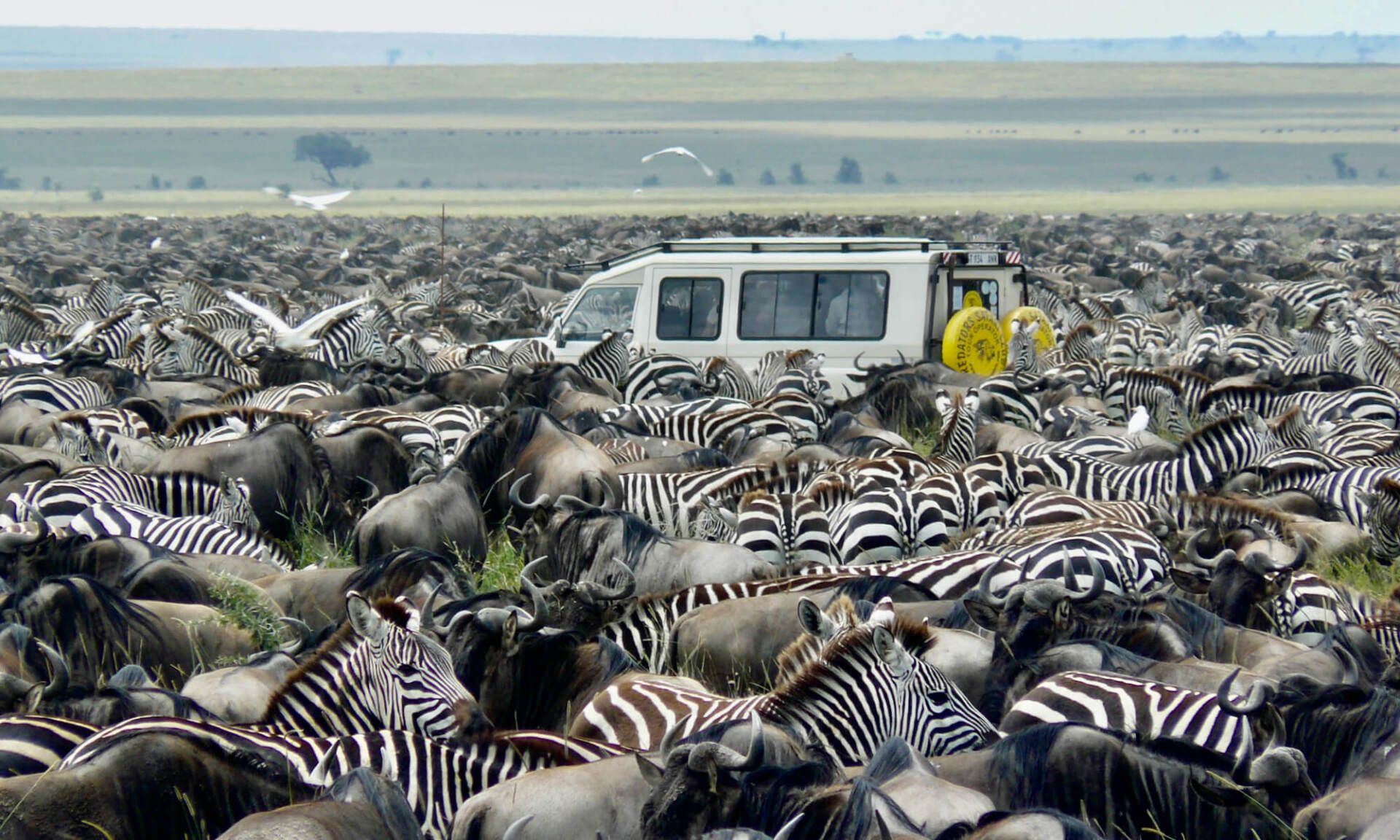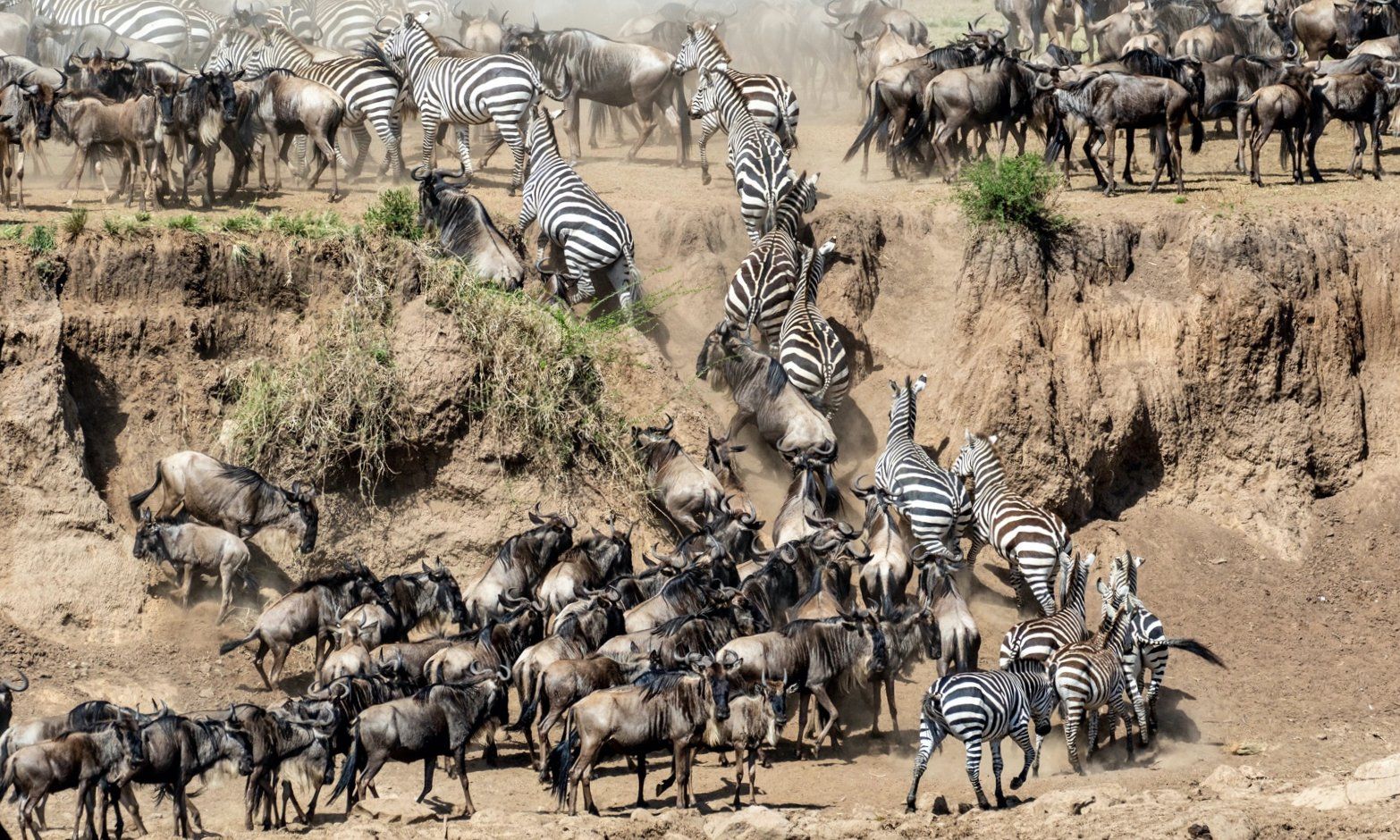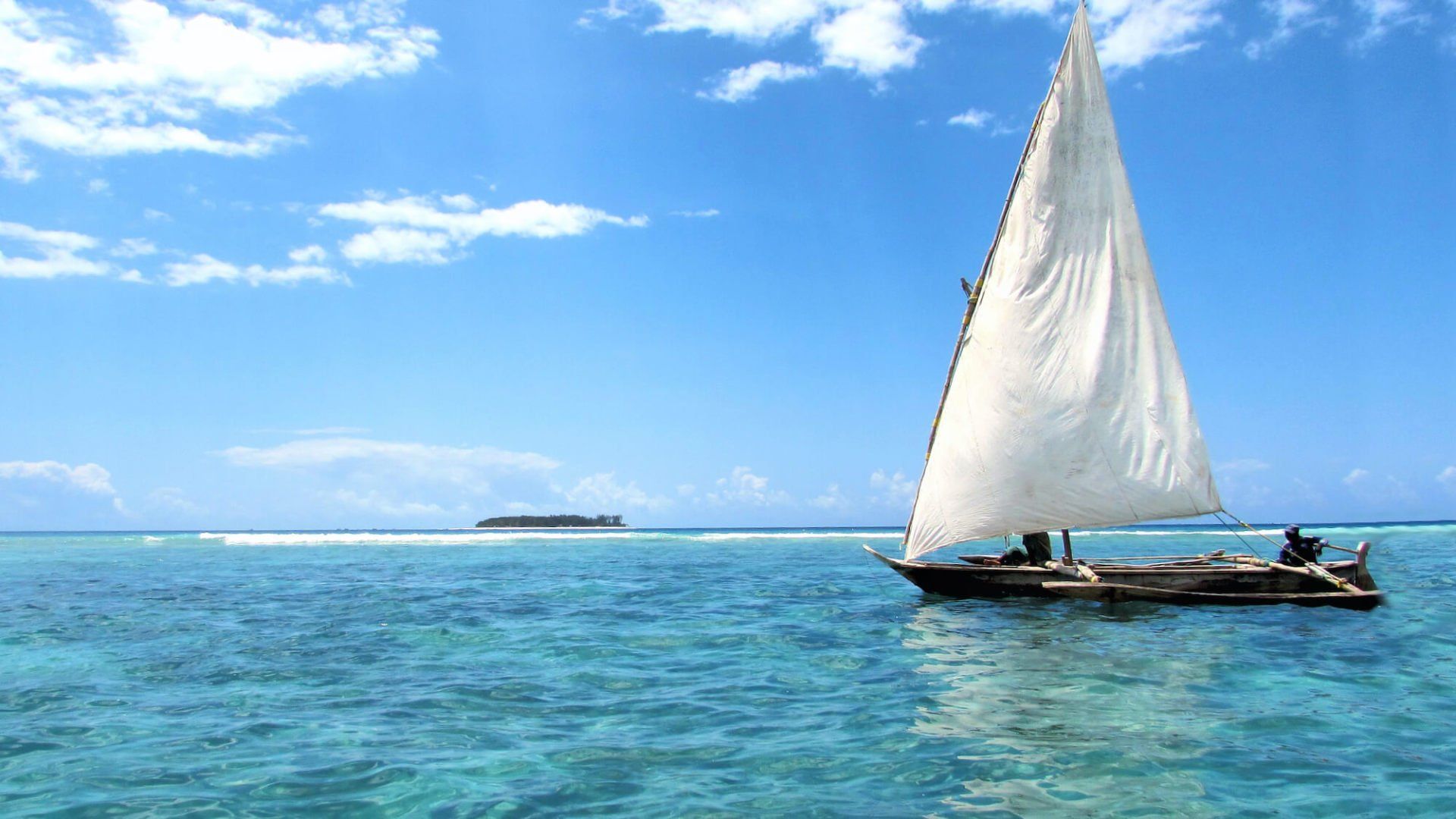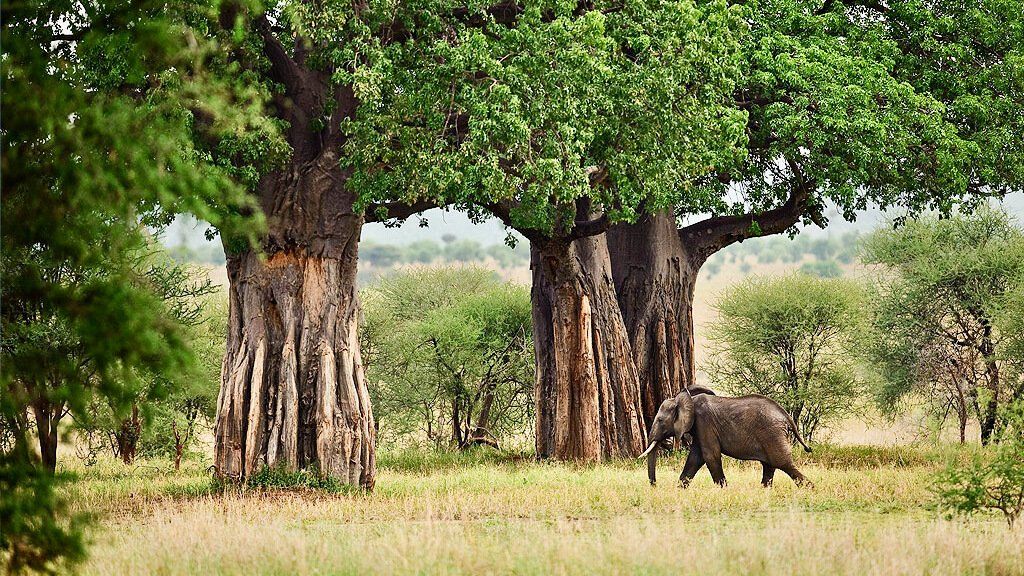This 7-day group safari
is ideal for those seeking to discover the safari highlights of Tanzania. We visit Lake Manyara’s
diverse mix of woodlands, forests, hot springs and the lake before we drive to the Ngorongoro Crater
for unforgettable wildlife encounters. We spend the last three nights in the Serengeti National Park
where you can witness thousands upon thousands of wildebeest moving powerfully across the savannas. We end our safari with a flight from the Serengeti back to Arusha.
Our small group safaris offer the opportunity to explore Tanzania while enjoying the company of an intimate group of like-minded safari enthusiasts, on a set itinerary.
Itinerary
We also offer this as a private safari or can send you a tailor-made quotation similar to the above itinerary - one designed specifically for you, around your taste, budget, interests and more.
Dates & Prices
Dates:
SMALL GROUP DEPARTURE DATES:
This 07-Day Taste of Tanzania Group Safaris depart during April & May on set departure dates.
Dates to be confirmed!
Rates:
| RAND Rate (SA residents ONLY) | USD Rate |
|---|---|
| Our website rates will be available soon | Our website rates will be available soon |
| (Excluding International flights & airline taxes) |
- Request a quote from our Safari Specialists for the most current rates and availability on our group departures.
- Please treat all pricing as a guide only.
- All rates are subject to increases beyond our control, including fuel price, government taxes and exchange rate fluctuations.
- Maximum 18 clients per safari, with a maximum of 6 clients per vehicle.
National Parks
Lake Manyara National Park
Located on the edge of the Rift valley, Lake Manyara is a remarkably species-rich reserve, especially known for its birds, elephants, flamingos
and tree-climbing lions.
En-route to Ngorongoro Crater and the Serengeti, Lake Manyara is well worth a stop in its own right. Its forests, bush plains, baobab-strewn cliffs and hot springs offer an incredible variety in a small area. The alkaline soda lake
is home to an amazing array of bird life with the best birding
opportunities from November to April. During this time the migratory birds from Europe and Northern Africa can be observed and many birds can be seen in their breeding plumage.
Ngorongoro Crater
The Ngorongoro Crater is the world’s largest unbroken volcanic caldera and is regarded as the 8th wonder of the world. It is one of the most diverse and fascinating areas of Tanzania and has been given the status of a World heritage site and International Biosphere Reserve. The fertile slopes and steep forest-covered walls are home to approximately 30,000 animals
including the rare black rhino. The various ecosystems found within the 260 square kilometre crater floor sustain Cape buffalo, elephants, wildebeest, zebras, elands, gazelles, hippos, numerous bird species as well as a high concentration of predators. Although birdlife is generally good throughout the year, from November to April, migratory birds from Europe and Northern Africa are present and many resident birds are in breeding plumage.
Serengeti National Park
The Serengeti’s endless plains is a UNESCO World Heritage Site
and is patrolled by Africa’s big cats, elephants, buffaloes, gazelles and giraffes and is perhaps most famous for the migration of animals. The principle players are the wildebeest, whose numbers appear to have increased to about 2 million. In addition, about 250,000 zebras make the seasonal journey to fresh pastures, first to the north, then the south after the rains. Their ancient instinct to move is so strong that no drought, gorge or crocodile-infested river can hold them back. In February the wildebeest cows drop their young in a synchronized birthing that sees some 300 000 to 400 000 calves born within two to three weeks.
Bird watching in the Serengeti is good all year round, at its very best from November to April.This is when European and North African migratory birds are present for resident species.
